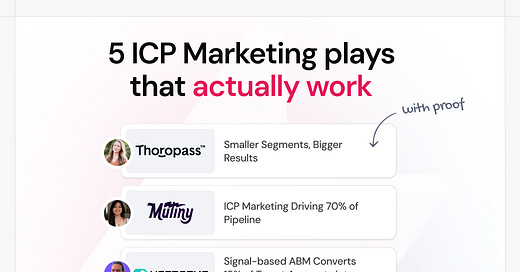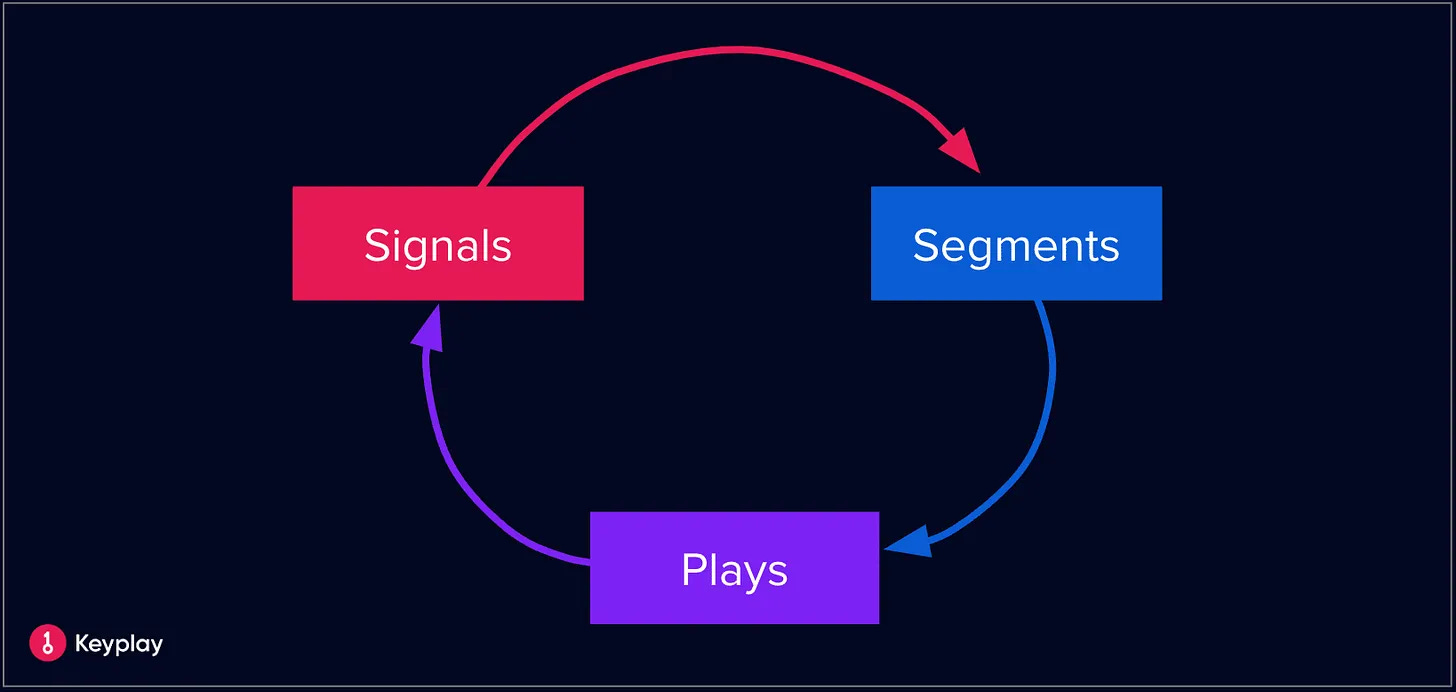5 ICP Marketing Plays that *actually* work (with proof)
Proven plays from UserGems, Thoropass, Mutiny, Daloopa, and Superblocks.
We all know what bad looks like in B2B.
Spray and pray. Turn and burn. Growth at all costs. Marketing creates “MQLs” and sales closes them. Siloed departments, running stale playbooks, and missing quota… again.
The best GTM leaders are building a new playbook.
They’re using modern tooling to identify their best accounts.
They’re aligning and focusing on them.
And they’re using strategic segmentation & precision to create more value for them than anyone else.
In this practitioner deep dive, we looked at 5 different GTM practitioners and the modern plays they’re using to execute this new playbook. So you can learn from what’s working for other teams, right now.
1.) How Thoropass Uses Smaller Segments to Get Bigger Results
The play
Most companies segment by company size, geography, or vertical. This works, but Kaylee Edmonson unlocked growth by going one level deeper and segmenting by use case.
One of Thoropass’s competitive advantages in a crowded space is that they provide auditing services in-house. This is especially valuable for companies who need to comply with multiple frameworks.
So, Kaylee worked with Keyplay to identify companies with multiple frameworks that also score an A or B in their account scoring model.
She runs targeted LinkedIn ads at those accounts, speaking to the specific pain they’re experiencing, and then their team outbounds those accounts 3 weeks later.

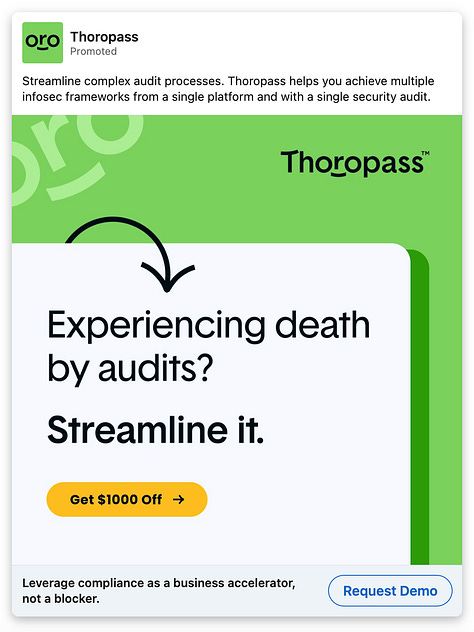
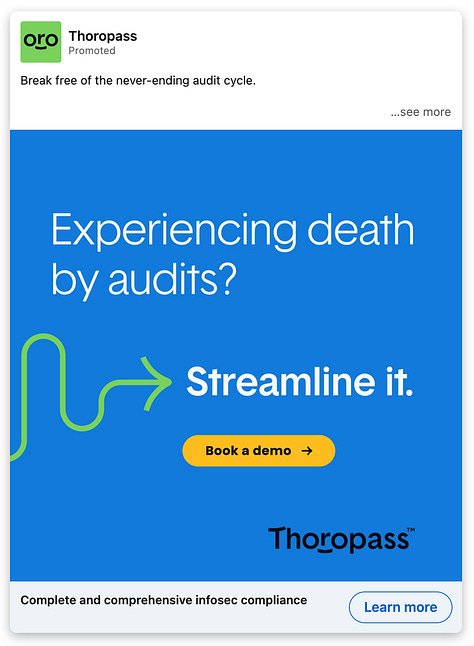
Thoropass's ads speak directly to a pain that they're confident prospects feel— the audit slog.
Why it works
Firstly, being this intentional about account selection means that all the downstream metrics look better for this segment. ACV, sales velocity, and retention improve, and they can feel confident they’re not wasting resources on non-ICP Pipe.
Secondly, this hyper-segmentation lets Kaylee’s team speak directly to the specific and relevant pain their target prospects are experiencing (“death by audit”)— and build real trust. It’s rare that a vendor truly speaks the customer's language. But hyper-segmentation like this lets Kaylee’s team do this at scale.
Companies experiencing “death by audits” is one segment, but now Kaylee organizes her GTM around plays centered around their best segments.
Tactics
Kaylee uses Keyplay to identify accounts that are most likely to have this specific pain (with a combination of custom signals and some AI) AND score highly in their ICP Model. Keyplay syncs to Hubspot and populates an active list that syncs to LinkedIn Ads.
*Kaylee creates some incredible content documenting her learnings executing on this new playbook. I strongly recommend you go follow her Substack, Demand Loops.*
2.) Mutiny's ICP Marketing Playbook that Drives 70% of Pipeline
The play
Mutiny’s ICP Marketing engine is a case study in modern GTM Excellence. Stella Li’s targeted, personalized ABM program is a big reason why (it’s responsible for 70% of their pipeline 🤯).
Her motion is simple. She collaborates with AEs to define and prioritize segments, creates experiences like ads, outbound sequences, and 1:1 microsites (with Mutiny), and activates their BDR team on engagement.
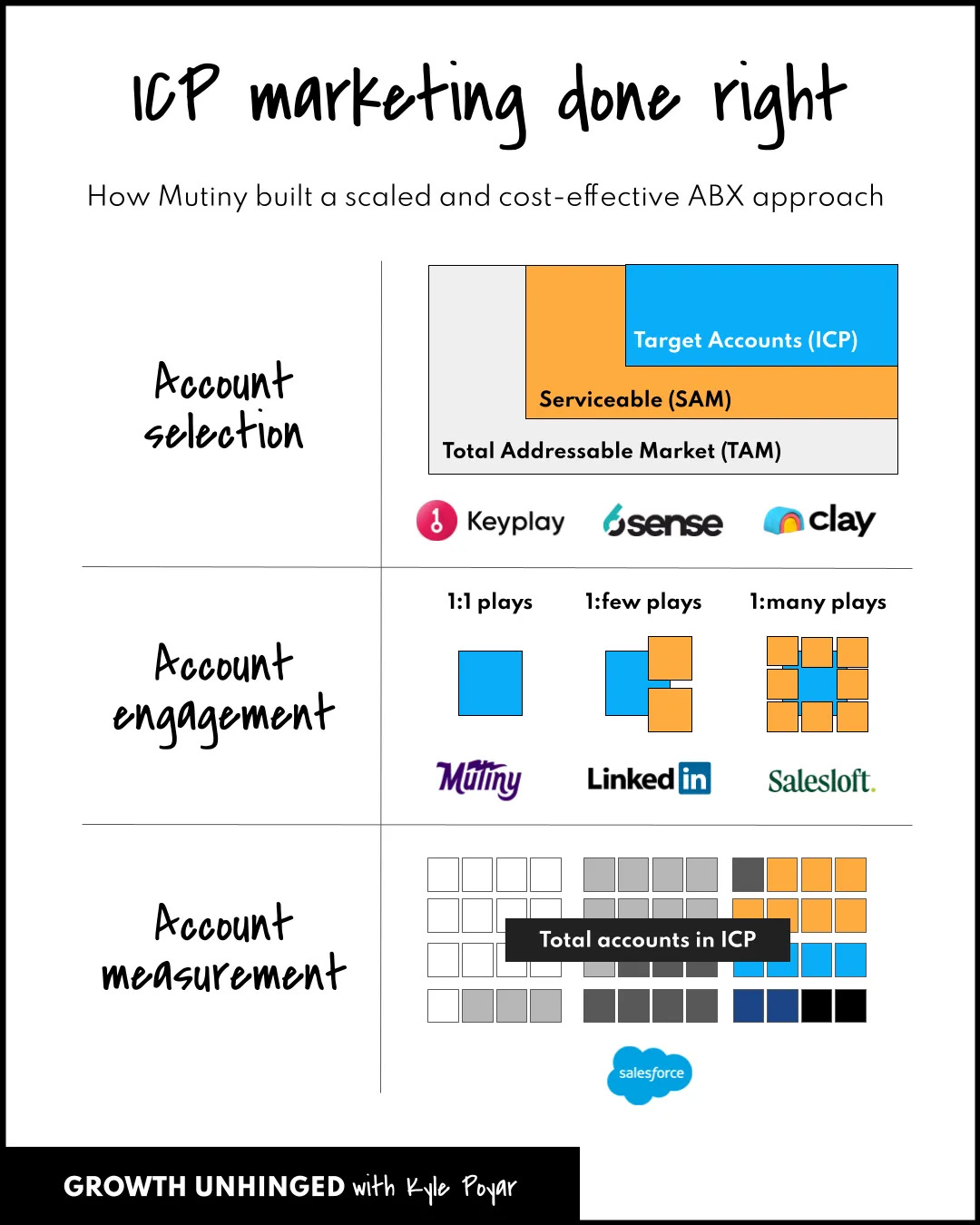
Why it works
This program finally clicked for Stella when she started working closely with sales to identify the right segments & create tailored messaging. Instead of handing Sales a list of target accounts, Stella built the list with them. AEs and Marketing came together to identify patterns in past wins—specifically, when prospects fell in love with Mutiny.
Those “Aha!” moments became the foundation for segmentation. Rather than starting with surface-level traits, the team focused on the signals that indicated strong product resonance. That led to three clear groups:
Companies with dedicated ABM teams (their best-fit)
Companies with ABM tech but no dedicated team
Companies not yet doing ABM
This segmentation allowed Sales and Marketing to align on where Mutiny could have the biggest impact—and build personalized campaigns that Sales would actually use. By anchoring on moments of product love, the team ensured every campaign spoke directly to what mattered most to each segment.
Tactics
Stella uses Keyplay to operationalize her segmentation, filtering A accounts by team demographics, or existence of ABM tech to build hyper-targeted lists she and the AEs feel confident in.
She runs “a campaign in a box” to these accounts that includes templated LinkedIn ads, website experiences using Mutiny's platform, in-person events when appropriate, and outbound email sequences.
3.) How UserGems Converts 15% of Target Accounts into Opportunities
The play
Isaac Ware, Sr. Director of Demand at UserGems is running a simple personalized, scaled ABM playbook that consistently converts 15% of target accounts into opportunities.
They select dream accounts, run personalized LinkedIn Ads driving to personalized landing pages, and then enroll in BDR outreach.
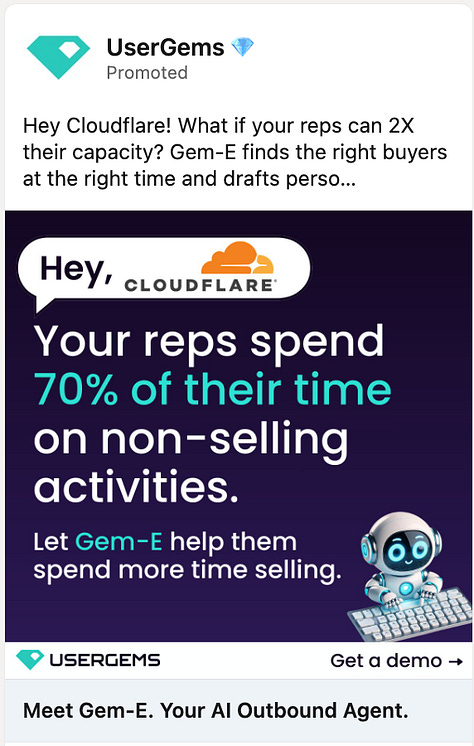
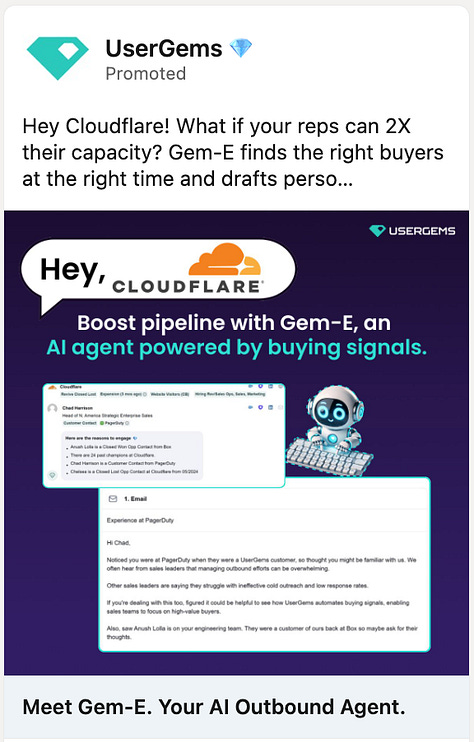
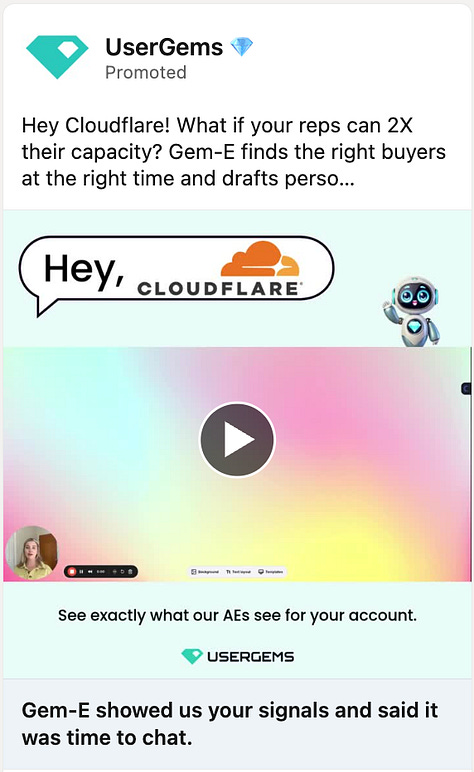
Why it works
Isaac sees 3 reasons why this play is working so well:
Relevance. Like Kaylee Edmonson (the next play), they see the value in speaking directly to their target prospects. This motion allows them to do that at scale.
Precision. Because of the rigor applied to account selection, they can feel confident they aren’t wasting resources working non-ICP accounts.
Depth. Because of the rigor applied to account selection, they can justify spending more time per target account to craft meaningful outreach, discover intro opportunities, and truly break through.
“I want to emphasize that this program works because we use signals to prioritize the accounts and automate the outreach so that Gem-E writes outbound for the SDRs based on said signals. Signal alignment from ad to outbound.”
Tactics
To select accounts, UserGems uses Keyplay to surface high-fit accounts, UserGems to surface signals within those As, and then they align with AEs/BDRs to get buy-in.
They create personalized LinkedIn Ads and landing pages manually using Canva and Webflow templates.
4.) B2B Influencers Dropping Cost/Opportunity by 75%
The play
Gabe Alvarez, Director of Demand Gen at Daloopa is partnering with niche B2B influencers who have deep expertise and audience trust in their industry, financial services. Rather than pursuing traditional marketing channels, they identify former analysts with targeted Substacks and podcasts who already reach their exact ICP, then create two-way collaborations where influencers use their product and share insights with their audience.
So far they’ve seen 40-50% month-over-month traffic growth, 30% increase in form fills, with 40% of inbound leads coming from these influencer relationships. And all for 75% lower cost/opportunity than anything else they’ve tried.
Why it works
This approach succeeds for three key reasons:
They're reaching a highly specialized ICP (hedge fund analysts and portfolio managers) who are difficult to target through traditional channels.
These influencers have genuine subject matter expertise, creating content that naturally demonstrates the product's value.
The collaborative approach creates dual value - influencers get free product access to improve their content quality, while Daloopa gains both distribution and authentic product endorsements.
Tactics
They find influencers through Substack searches, manual research, and customer interviews. Gabe intentionally over-indexes on audience quality and engagement over quantity.
Daloopa’s collaboration structure varies by influencer size. For smaller Substacks, they offer full product access in exchange for mentions. For larger audiences, they combine product access with traditional sponsorship, but also create unique arrangements like case studies that live on both platforms, with compensation tied to lead generation.
5.) Invite-Only Dinners Converting 20% of Attendees to Opportunities
The play
Cheryl Wolf, Head of Demand Generation at Superblocks is using private invite-only dinners to convert 20% of engaged prospects at enterprise accounts into opportunities.
Why it works
Software architects are an underserved segment for Superblocks—they’re senior ICs who have significant influence over tooling decisions but don’t always get the same networking opportunities as executives. They genuinely appreciate spaces to meet like-minded peers, making these dinners highly valuable.
They’re also highly skeptical buyers, making it very difficult for typical marketing to break through or build real trust. Having face-to-face conversations with peers who are already seeing value from Superblocks is the fastest way to build the trust necessary to break through in the enterprise.
Tactics
Their system is simple. They start by inviting customers and late-stage deals. This gives them logos they can name-drop in a targeted outbound campaign from their CEO to software architects at target accounts.
The TL;DR: What you can learn from these 5 plays
ABM doesn’t have to be complicated. Stella and Isaac are implementing simple playbooks and seeing incredible results. No overpriced ABM stack or complex strategies. Just thoughtful account selection and building experiences you’d want if you were buying.
It’s time to rethink segmentation. Kaylee is doing things with segmentation that wouldn’t have been possible just a couple of years ago. What used to be a “wouldn’t it be cool if” is actually now possible. How can you rethink your segmentation through this lense?
Influencers work for harder-to-reach ICPs. If your ICP isn’t reachable through traditional channels or they’re less trusting of traditional marketing, it might be time to copy Gabe’s playbook.
Don’t ignore the under-served buyer. The way we choose vendors has changed. Everyone on the team has a voice. But many GTM teams are still ignoring these under-served champions. Maybe it’s time to take a page out of Cheryl’s book and test running the same plays to a slightly different persona.
This is our first practitioner deep dive. Did you like it? Reply to this email with what you liked or didn’t, or what you’d like us to deep-dive on next!


